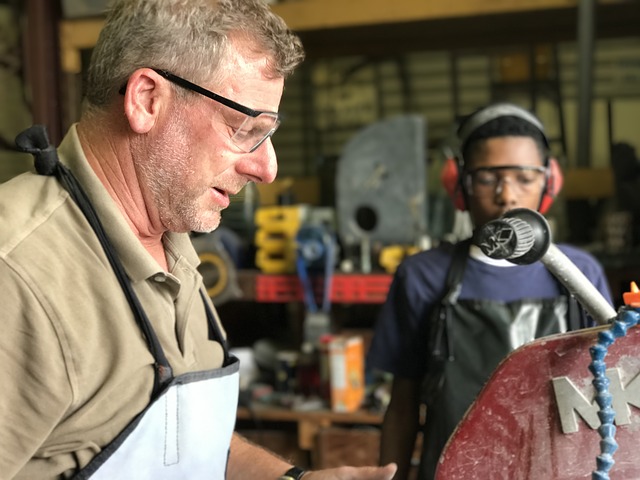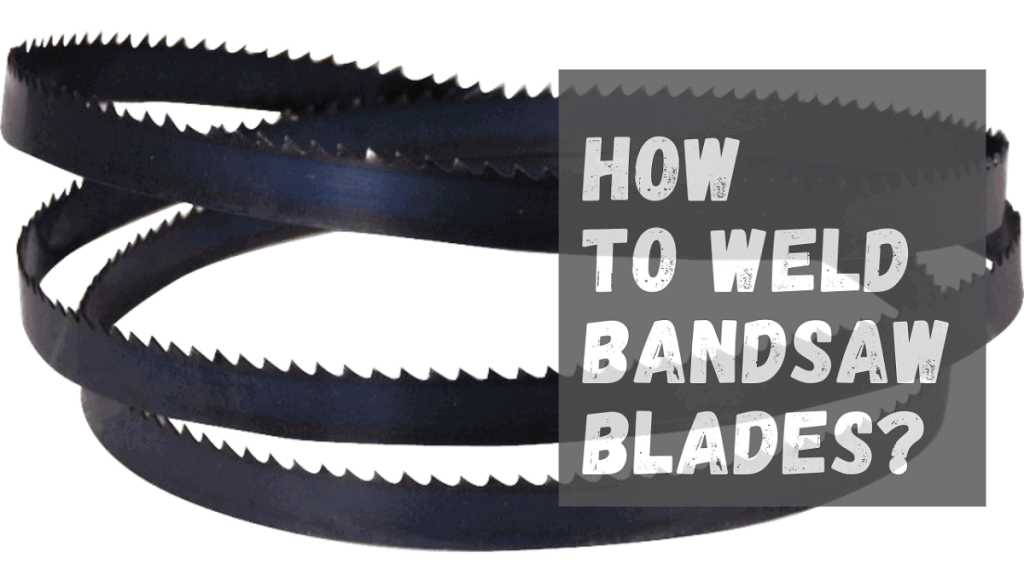If you have a machine equipped with a welder, you can use it to weld a bandsaw blade correctly. In this article, I’m going to show you how to weld a bandsaw blade properly.
You might have wondered, why is there a blade welder on the machine? Along with that, I’ll also be going through the process of how to weld a blade and why you would want to weld one in the first place.
Before I show you the process, let me tell you why you would want to weld a bandsaw blade in the first place.
Why Do You Need To Weld Bandsaw Blades?
Let’s say you want to cut a 6-inch circle on a 12-inch block. However, the material you want to cut is 12-inches, so how do you cut a 6-inch hole? There are a couple of ways you can go about this, but the most effective way to cut a circle is by using a bandsaw.
Why Bandsaws Have A Blade Welder?
The main reason here is to save time. You will be able to make custom length blades without the help of a welder. In addition to that, you will be saving a lot of money because you won’t have to buy new blades all the time.
Also, a lot of you guys have bandsaws, and you have to buy readymade blades because you don’t have welders on them. Also, those bandsaws are kind of expensive too.
For example, if you have a bandsaw that takes about 95-inch of blades and if you were to buy them readymade, it will cost you around 14 – 15 bucks apiece. This gets kind of expensive after a while.
However, if your bandsaw doesn’t have a welder but you want to make your own blades, you won’t need a welder.
Welding Bandsaw Blades
The process I’m about to show you doesn’t require a bandsaw with a dedicated welder. You can do it using a custom fixture and with the help of silver soldering.
It takes about the same amount of effort and the same amount of time and also doesn’t take the specialized tooling you would need to weld blades. For this process, you won’t need to have an expensive welder, or simple band saw blade welder.
You can make your own with a piece of steel. Make a rabbet cut along the edge of the steel to set the blade in and line up the two halves.
Create a little relief in the center around the joint so that you can get in there with the torch and heat it up inside of it. Also, add two toggle clamps on the steel to hold the pieces down.
Normally, it’s better to buy a custom blade, but if the blade is new, why waste a good blade?
Step 1
You can use the custom jig that I’ve shown you or use angle iron and just hack off a piece of it so that you can weld the blade in that notch. The whole purpose of using meta is so that you can hold it but also so that it stays flat.
If the inner part of the angle iron is rounded, you will have to improvise here. Take a thinner piece of woodblock and cut small straps so that they fit inside there perfectly. This will give you a base to put the bandsaw blades against.
Step 2
Now, you will need to make a beveled lap joint. To do that, first square the end off a little bit of the blade. Once you have squared them off, clamp the blades to the jig so that they overlap. Before you fix the blades, test them to see if they lineup without too many bulks.
Step 3
Get the blades lined up with clamps on either side. Make sure the blades are tight up against the wood. Also, you need to ensure that they form a nice straight line. Now, overlap the blades a little bit.
Step 4
Now you will need to put some flux in there. Paste flux will also work. Flux helps the solder to bond, but it’s also a cleaner, so it does a couple of things. It helps the solder to flow and also cleans the area.
Get your torch going, and don’t put a lot of heat at first. That flux should draw the solder right in, and that’s why you don’t want to put a lot of heat on this joint. Now, allow the flux to melt and hit it with a little bit of solder. Hopefully, it will draw right in there.
Step 5
If you see solder on both sides, that means it flowed through both sides just like it should. Don’t worry if you feel a slight lump on the joints. You can make it nice and level with a bit of grinding.
Step 6
Time for testing. Take the blade and install it on your bandsaw. Time to do a test cut to see if it runs. If you want to feel more confident, try flipping the blade over and bending it. If that doesn’t make it break, the blade will run just fine.
First, test the bandsaw blade without pushing any wood through it. Now for the main test. Take a piece of wood and see how it cuts and see if it makes any difference.
If you don’t notice any difference in the cut, congratulations. You have successfully welded a bandsaw blade. To be more precise, you have actually soldered it.
Final Words
There are times when soldering is more effective than welding, especially in terms of strength. As you see, it’s pretty easy to do. Now you can fix your own bandsaw blades and know how to weld bandsaw blades.
I must say, that was pretty easy. The hardest part here is actually to make a functional jig. Once you get that done, the rest of the process is pretty simple. Don’t worry if the jig is a bit rudimentary; if it works, then it works.
Related Pages:

This is me Sonnet. I manage a full-time workshop for my clients’ woodworking projects. From a very young age, I’ve been always passionate about DIY projects. And that’s the reason I’m amicable with the woodworking tools. I’m regularly handling a couple of projects like cabinets, furniture, boats, and many more using wood, veneers, and laminates.
